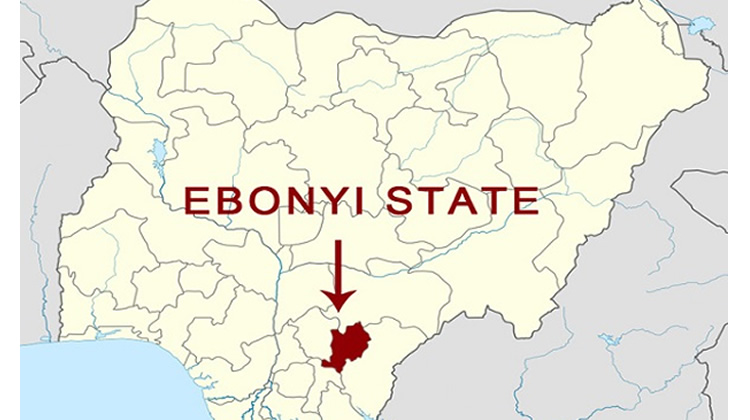The Minister of Humanitarian Affairs, Disaster Management and Social Development, Sadiya Umar Farouq, has tasked stakeholders in disaster management, especially the National Commission for Refugees, Migrants and Internally Displaced Persons (NCFRMI), to take proactive steps in planning the recovery and rehabilitation of victims of the 2022 floods.
Speaking Friday in Abuja, during the presentation of Global Rapid (post disaster) Damage Estimation (GRADE) report of 2022 floods in Nigeria, the minister said the objective of the GRADE Note, developed by the GPURL World Bank’s Disaster-Resilience Analytics and Solutions (D-RAS) team, was to assess the economic impact of the June-November 2022 Nigeria Floods.
She said the GRADE report gave sectoral and state-by-state effect that is critical for planning. It becomes a vital tool to understanding the effects of the flood on people, their coping capacity and who are the most vulnerable groups. It can also be used to identify the most urgent recovery needs and the best methods of the reconstruction of critical sector/infrastructure.
The minister revealed that the number of persons affected in the 2022 floods has risen over the season since June up to between 4.4 million and 4.9 million affected people as of November 25th (around 2% of the country’s population), while, “in terms of destroyed and damaged buildings, there is significant damage in many states, with counting still ongoing.”
She said: “It’s trite to say that floods are the most frequent and recurring natural hazard in Nigeria. Furthermore, climatic factors, like inter-decadal cycles related to rising oceans’ sea-surface temperatures and reduction in aerosol over the North Atlantic affecting the West African Monsoon, is aggravating the recurrence, intensity and spread of these floods across the country. This is more noticeable around communities and towns along river banks and/or bordering seas/oceans. It is also worthy of mention that rapid urbanization and poor drainage, occasioned by deficits in waste management also play an important role in the increasing flood incidents in the urban areas.
“The objective of the GRADE Note, developed by the GPURL World Bank’s Disaster-Resilience Analytics and Solutions (D-RAS) team, was to assess the economic impact of the June-November 2022 Nigeria Floods. The GRADE Note is a fast first-order approximation of the economic impact, and so provides a rapid high-level estimate of damages used to inform ongoing decisions in a timely fashion. The lack of access to field-observed damage data to conduct the calibration needed for the high granularity of a full catastrophe modelling approach of the GRADE methodology. This GRADE Note was developed using the empirical data defined in this document calibrated against historical data and experience, including the 2012 Nigeria Floods PDNA (Post-disaster Needs Assessment). The period of analysis is from June 2022 to 25th November 2022.
“The key findings of the GRADE are: All 36 States and the Federal Capital Territory (FCT) have been affected by the 2022 flood in Nigeria; with varying degrees of damages and people affected. The extent of population affected and houses damaged or destroyed being worse than the 2012 flooding in some localized areas.
“This analysis estimates that the total direct economic damages, based on currently reported statistics as of November 25th are in the range of US$3.79 billion to US$9.12 billion with the best (median) estimate at US$6.68 billion. This includes damages to residential and non-residential buildings (including building contents), as well as damages to infrastructure, productive sectors and to cropland.
“Estimated median damages are thus generally lower than the 2012 assessment (PDNA), but some localized areas may have experienced greater impacts than in 2012, and past seasons such as 2018.
“The number of persons affected has risen over the season since June up to between 4.4 million and 4.9 million affected people as of November 25th (around 2% of the country’s population). In terms of destroyed and damaged buildings, there is significant damage in many states, with counting still ongoing.
“There is significant damage to infrastructure including roads, irrigation and river infrastructure as well as WASH and electricity infrastructure with around $1.23 billion ($0.959-$1.724 billion) in damage expected.
“Damage to agricultural crops, associated water infrastructure, fisheries and livestock was also severe. Worse affected States are Jigawa, Rivers, Taraba, Cross River, and Delta. Well over 650,000 hectares of crops have been reportedly damaged, with modelling and other reports suggesting this is expected to increase past 1,000,000 hectares damaged or destroyed. The median estimate of these damages is around $1.837 billion with a significant range ($526 million – $2.473 billion) given changing yields, damage ratios, replanting possibilities, and uncertainties in market values of crops, livestock, and fisheries.
“On a general note, the GRADE assessment gives an overview of the nature of the flood disaster and its impact across Nigeria. It gave the sectoral and State-by-State effect that is critical for planning. It becomes a vital tool to understanding the effects of the flood on people, their coping capacity and who are the most vulnerable groups. It can also be used to identify the most urgent recovery needs and the best methods of the reconstruction of critical sector/infrastructure.
“I would like to seize this opportunity to assure you, ladies and gentlemen of the press and all well-meaning Nigerians here present, that the Federal Government has been responding to the 2022 flood and sent relief material to all affected states. Furthermore, an abridged copy of the GRADE report was submitted to Mr. President, based on which he graciously approved emergency intervention and livelihood program for the National Emergency Management Agency (NEMA).
“Furthermore, the National Commission for Refugees, Migrants and Internally Displaced Persons (NCFRMI) will be encouraged to utilize aspect of the GRADE Assessment to plan the recovery and rehabilitation of victims of the flood.
“I hereby call on all responding MDAs in Federal, States and Local Governments to also utilize this GRADE Assessment to ameliorate the plight of victims of the 2022 flood.”




